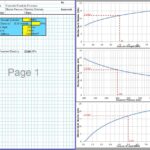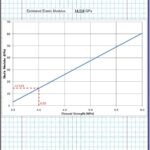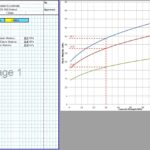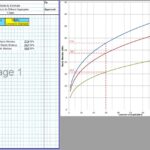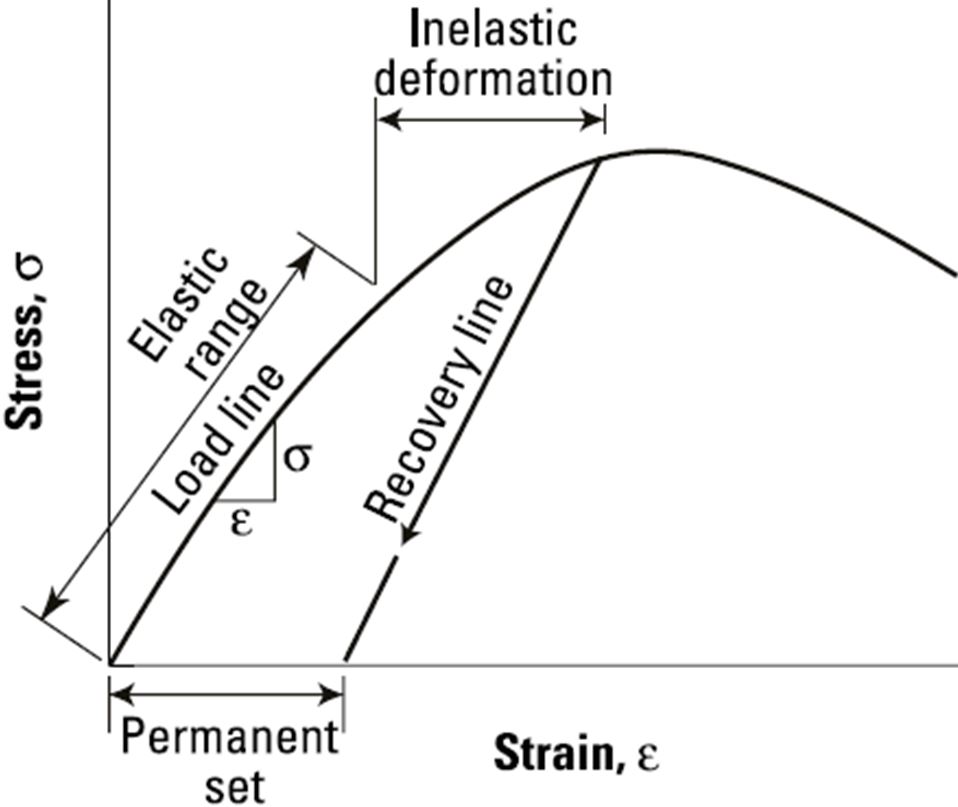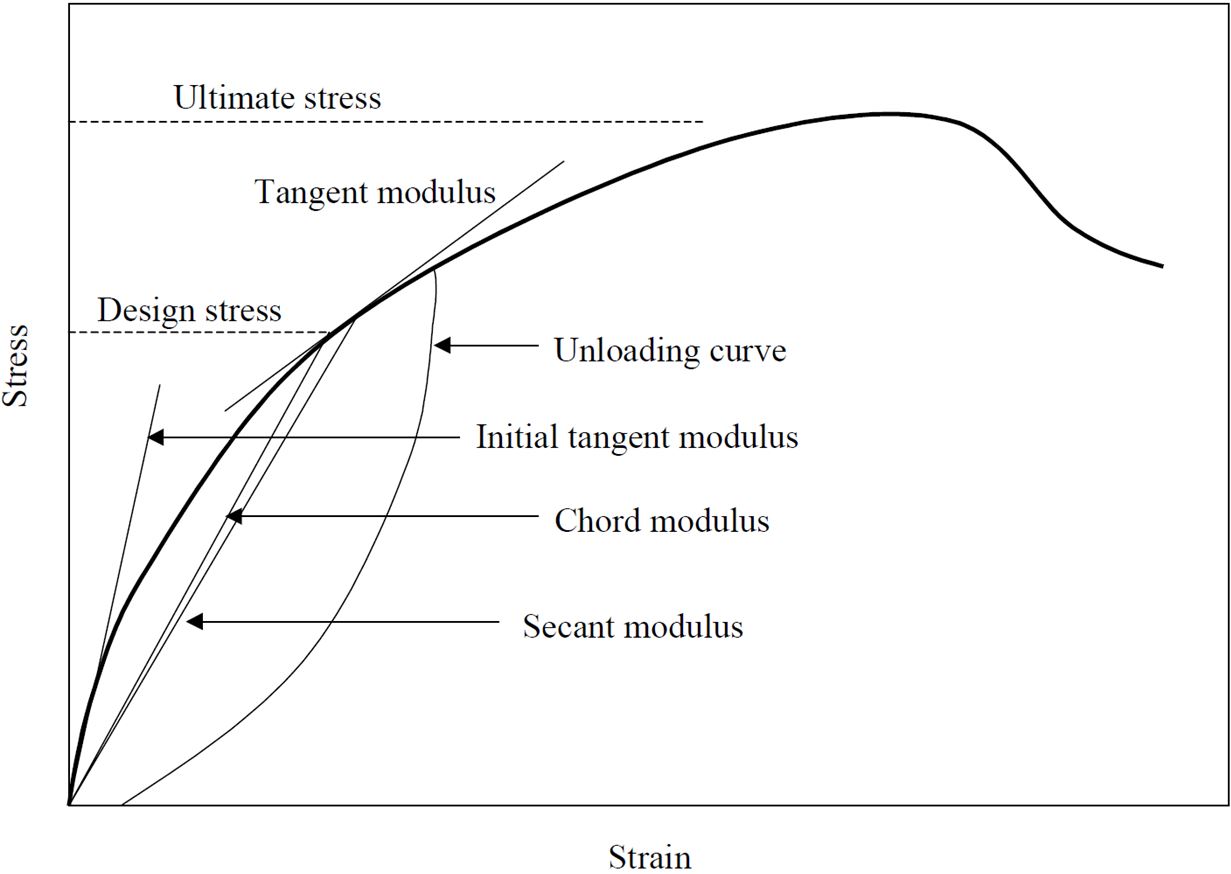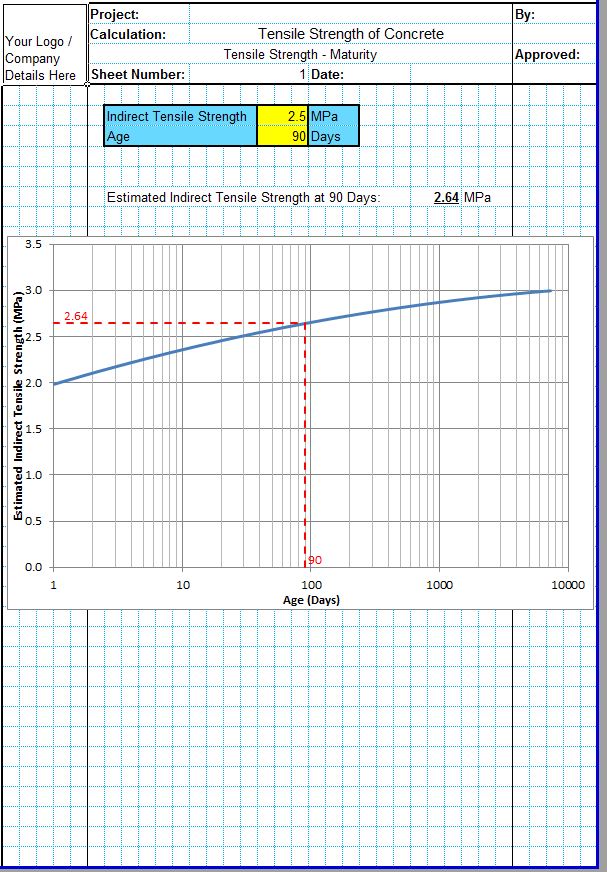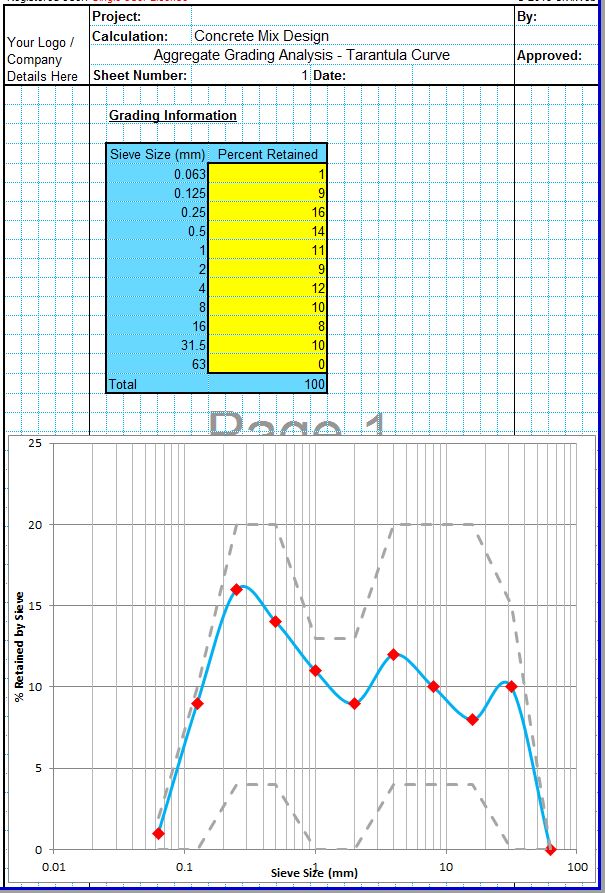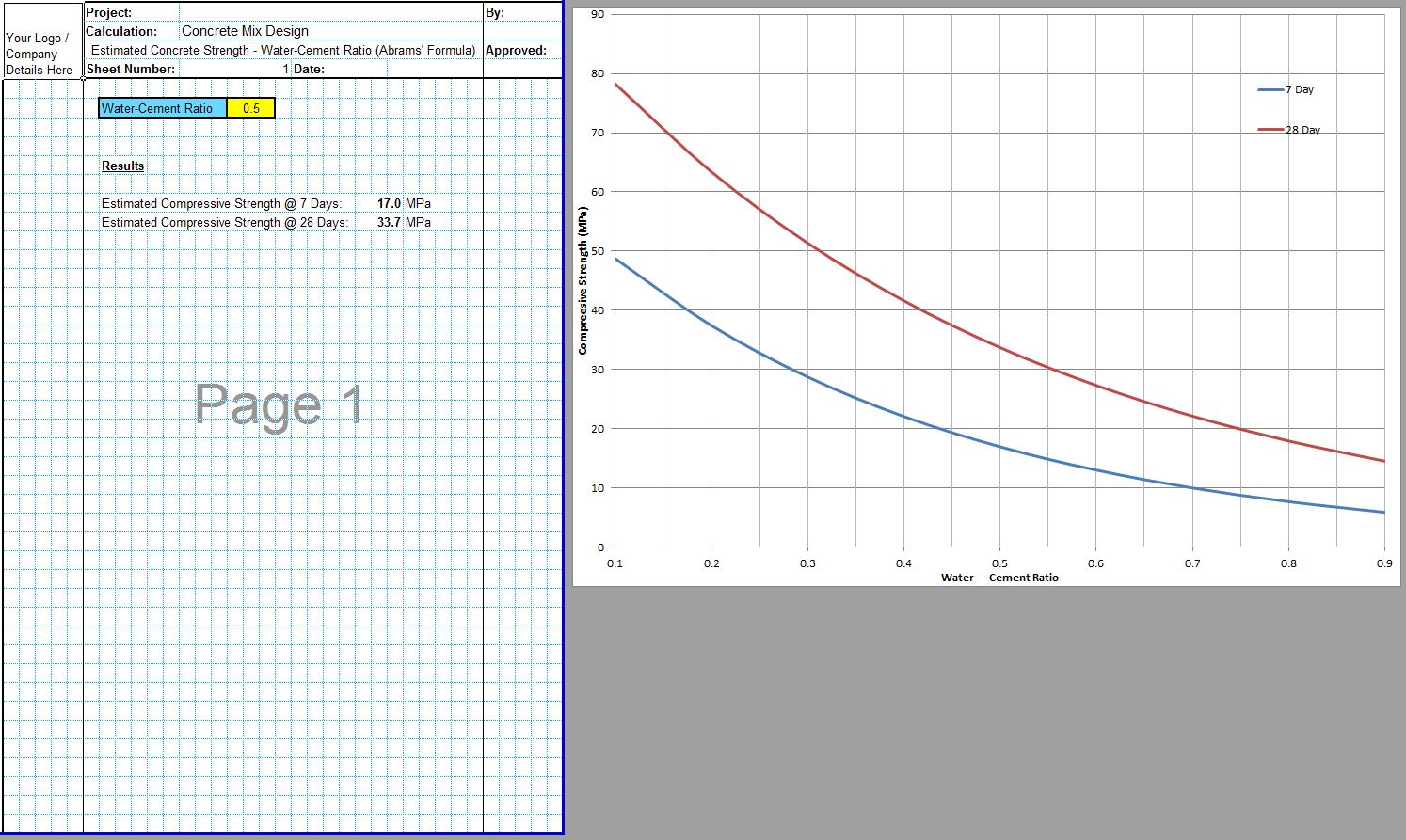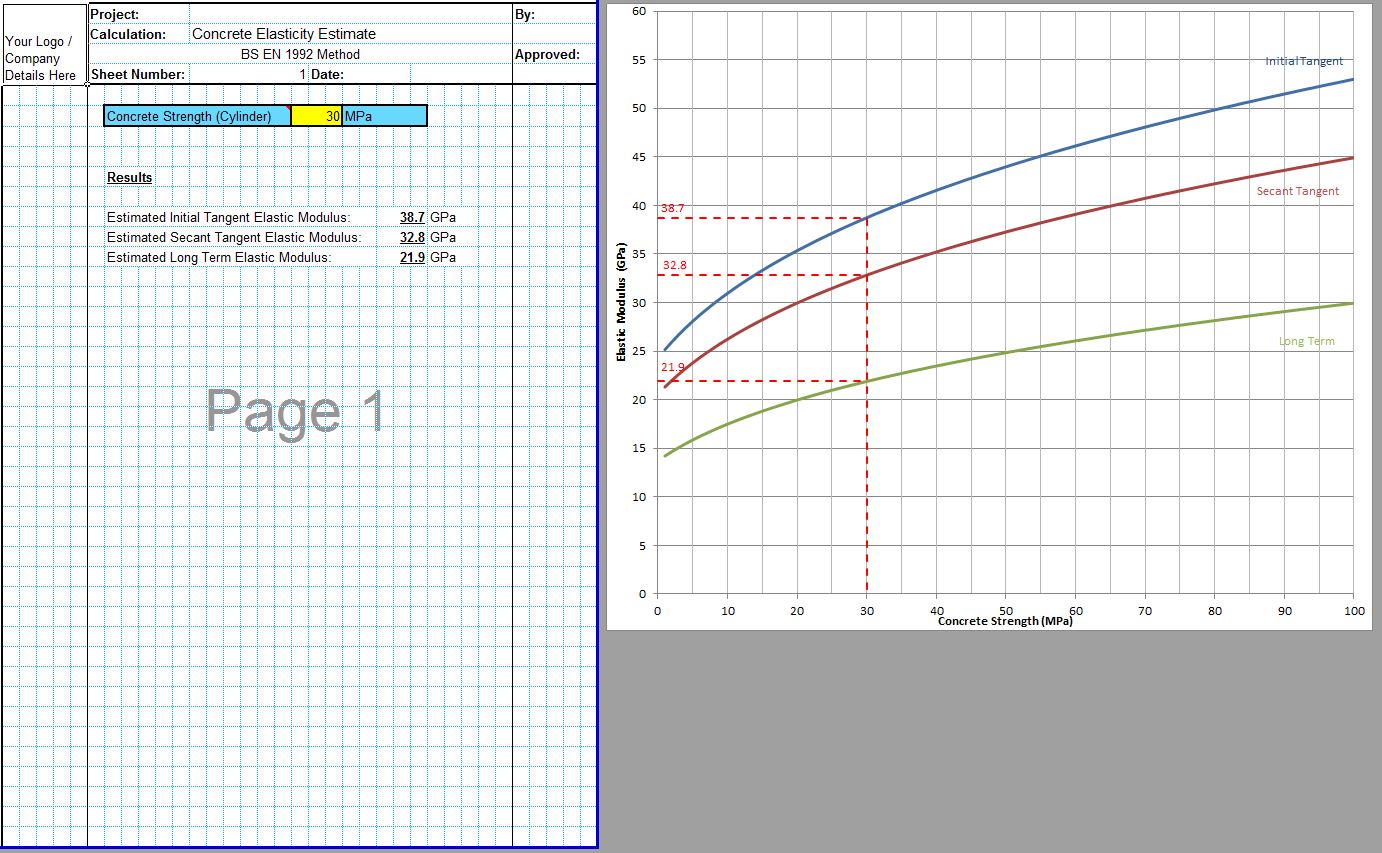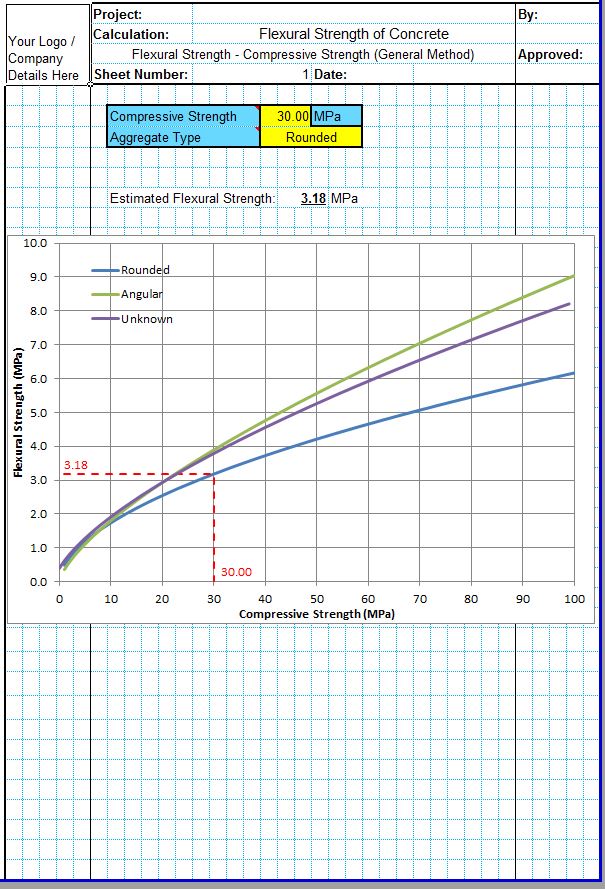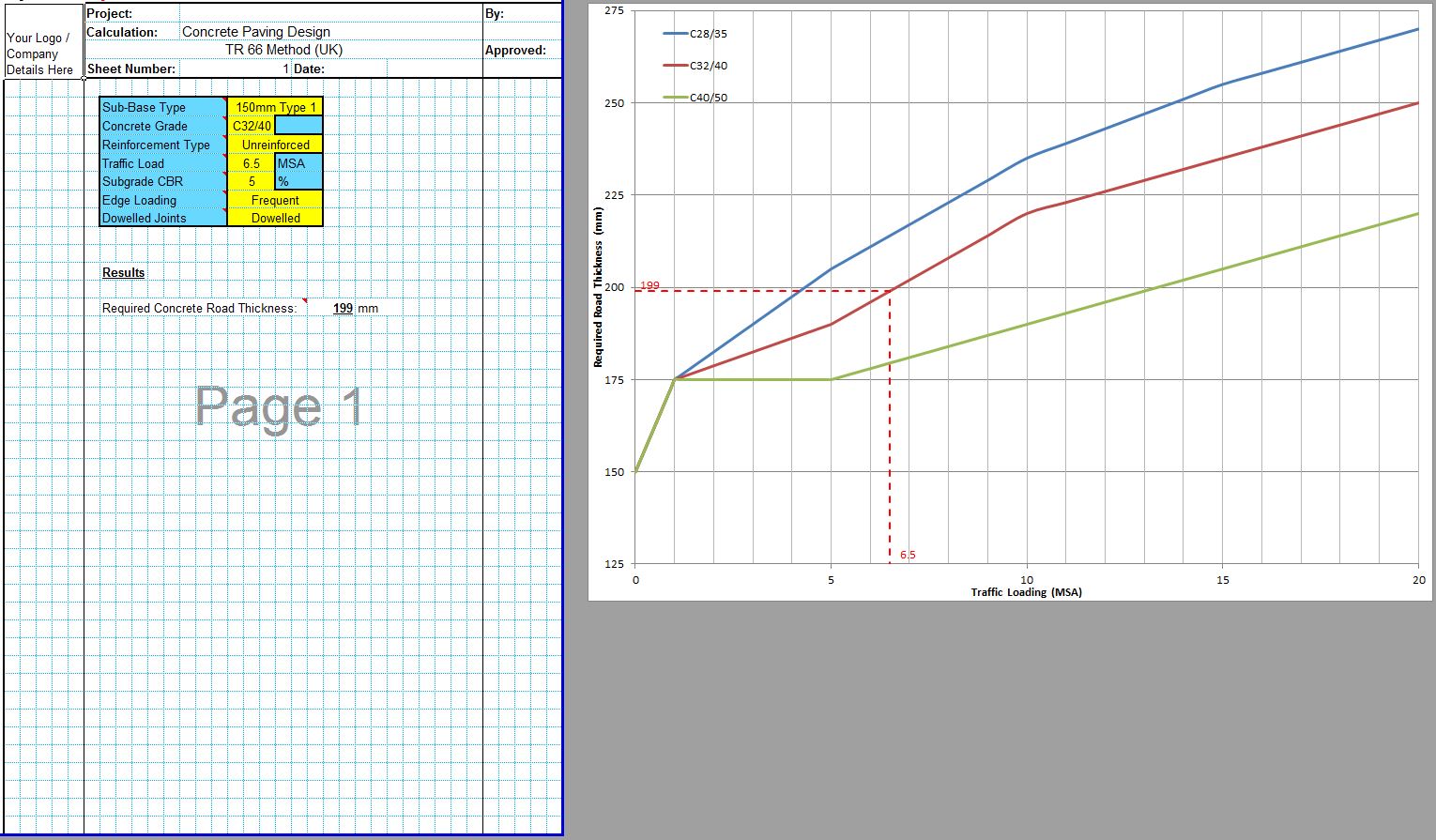The modulus of elasticity of concrete is a measure of the stiffness of the concrete or how much the concrete will deflect under load. It is used to analyze the concrete’s behavior under load, including deflections. Note this is also sometimes referred to as the Young’s modulus of concrete after the scientist Thomas Young who popularized the concept of a linear elastic relationship between stress and strain for solid materials at low stresses.
It should be noted that higher modulus of elasticity of the concrete is often not really desirable in a concrete member as higher stiffness materials will attract greater stress and therefore fail sooner than more elastic materials. That is unless the strength of the stiffer materials is increased in proportion with the modulus of elasticity. Often this is the case with concrete as the strength and modulus of elasticity of the concrete usually correlate quite well, but this is not always the case. For this reason it is not advised that the designer prioritize stiffness alone, only as a consequence of greater strength.
Modulus of Elasticity of Concrete Formula
As the elasticity is difficult to measure, for design a modulus of elasticity of concrete formula is used which correlates the modulus of elasticity of the concrete with the concrete’s compressive strength. This is generally acceptable as the correlations are fairly accurate and the Young’s modulus of concrete does not usually have a large impact on the design so long as it remains within normal parameters. It should however be remembered that strength and elasticity are not directly related so these correlations will always be estimates at best. The actual correlation is with the density, not the strength.
The CivilWeb Modulus of Elasticity of Concrete Formula Calculator can be used to calculate the modulus of elasticity of concrete using a number of published correlations with the concrete’s compressive strength. The modulus of elasticity of concrete calculations can estimate the dynamic, static and long term modulus of elasticity of concrete values. The Young’s modulus of concrete formulas used in the spreadsheet are detailed below. This spreadsheet can be purchased below for only £5.
Modulus of Elasticity of Concrete
The definition of the modulus of elasticity or Young’s modulus of concrete is the ratio of stress to strain. Concrete behaves in a linear elastic manner up to around 40% of its ultimate strength. The elasticity of concrete is different for static loads compared with dynamic loads, so the static modulus of elasticity of concrete is slightly different to the dynamic modulus of elasticity of concrete. A typical stress/strain curve for concrete is shown below.
The modulus of elasticity of concrete of normal density can vary between around 14GPa and 41GPa but structural quality concretes usually have a modulus of elasticity of around 22GPA to 31GPA. These modulus of elasticity of concrete values in psi can be converted by multiplying by a factor of 145,038.
Factors Affecting the Modulus of Elasticity of Concrete
The Young’s modulus of elasticity of concrete correlates quite closely with the compressive strength of the concrete and is generally affected by the same factors including the air content and porosity of the cement paste which in turn is related to the water-cement ratio. The largest factor is the modulus of elasticity of aggregate and the relative volume of the aggregates used. So the elastic properties of concrete can be maximized by choosing an aggregate with a high elastic modulus such as basalt or a dense limestone and by maximizing the amount of aggregates in the mix. This can be done by optimizing a continuous grading for the combined coarse and fine aggregates. Further information on aggregate grading is included in our Grading of Aggregates in Concrete post.
Modulus of Elasticity of Concrete Test
The modulus of elasticity of concrete is difficult to measure directly due to difficulties in accurately measuring the tiny strains involved. However there are ultrasonic methods which link the density to the modulus of elasticity of the concrete. These can however overestimate the Young’s modulus of concrete, sometimes by as much as 30% - 50% higher.
In the US there is a standard test procedure detailed in ASTM C469. This involves compressing a cylindrical concrete sample and measuring the strains induced.
Dynamic Modulus of Elasticity of Concrete
There are several different ways to express the modulus of elasticity of concrete. For example, roads and pavements subject to repeated load cycles from vehicles rather than static loads should use the initial tangent value or the dynamic modulus of elasticity of the concrete. This value does not include the effects of creep, yield or other longer term effects which are not important for repeated dynamic loads such as those experienced on concrete roads.
Elastic Modulus of Concrete - Eurocode
The European standard CEB Code 90 recommends the following equation to estimate the dynamic modulus of elasticity of concrete (initial tangent value), where fc,cyl = the characteristic cylinder strength of the concrete.
C = a correction factor to allow for different modulus of elasticity of the aggregates. Typical correction factors are shown below.
| Basalt | 1.2 |
| Quartzite | 1 |
| Limestone (Standard) | 0.9 |
| Limestone (Dense) | 1.2 |
| Sandstone | 0.7 |
Secant Modulus Value
The secant modulus of elasticity of concrete value is more commonly used in structural design as it includes the effects of creep and other longer term processes. This can be calculated using the below equation relating the secant modulus with the dynamic modulus of elasticity as calculated above.
Alternatively a general equation is provided in the eurocode BS EN 1992 to estimate the secant modulus of elasticity of concrete from the strength. This is shown below with fcm = the characteristic cube strength (fck) + 8.
Long Term Modulus of Elasticity Value
The long term modulus of elasticity of concrete can be calculated to adjust for creep. However these values can generally be calculated as two thirds the secant modulus of elasticity values as calculated above.
Modulus of Elasticity of Concrete Formula Calculator
The CivilWeb Modulus of Elasticity of Concrete Formula Calculator spreadsheet estimates uses two commonly used modulus of elasticity of concrete formula to estimate the Young’s modulus of the concrete based on the concrete’s strength. This spreadsheet can be purchased alone for only £5, or can be purchased along with the CivilWeb Concrete Properties Suite for only £10.
CivilWeb Modulus of Elasticity of Concrete Formula Calculator Spreadsheet
Our full Concrete Properties Suite of spreadsheets is available for only £10.
Download Free Trial Version
To try out a fully functional free trail version of this software, please enter your email address below to sign up to our newsletter.
